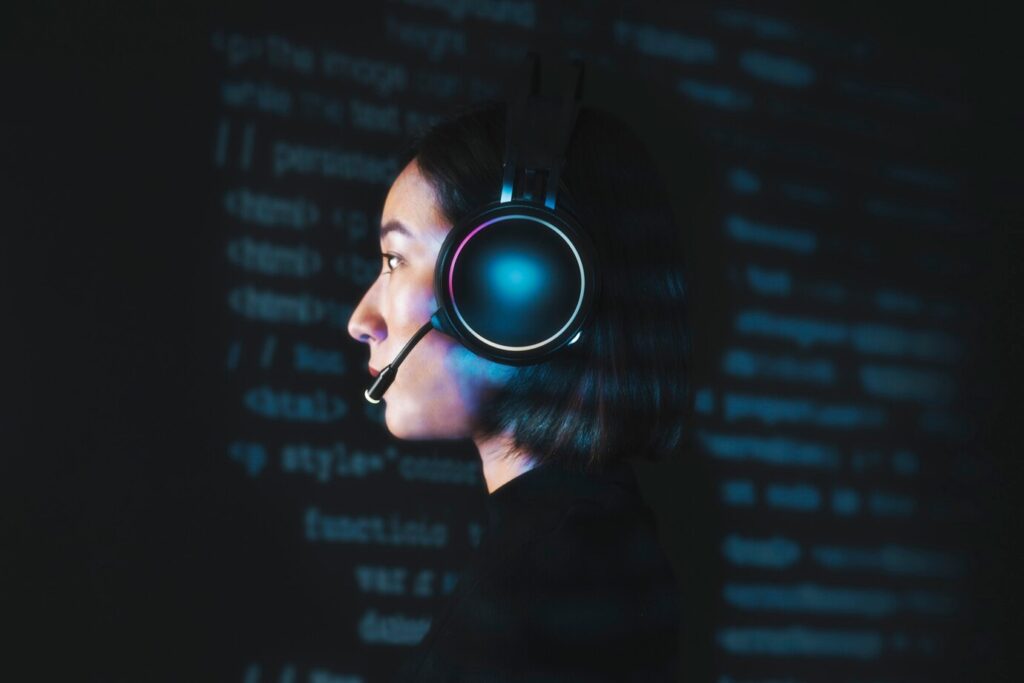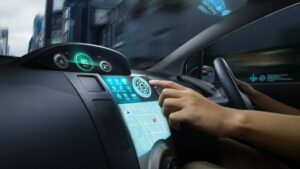The Technology Blog

How Voice Recognition is Enhancing Cybersecurity
Cybersecurity threats are constantly evolving. As hackers grow more sophisticated, so must the defences. Passwords, PINs, and even two-factor authentication are no longer enough in many cases. That’s where voice recognition steps in—a new layer of biometric security that uses the uniqueness of human speech to verify identity.
Voice recognition, often called voice biometrics, is becoming a key player in the future of cybersecurity. But what makes it so secure? And how is it being used to protect sensitive data?
Let’s explore how voice technology is changing the way we think about security.
What is Voice Recognition?

In cybersecurity, voice recognition is a method of verifying a user’s identity based on the unique characteristics of their voice. It isn’t just about recognising what someone says (speech-to-text); it’s about how they say it.
Each person’s voice is shaped by several factors, including:
- Vocal tract shape
- Accent and tone
- Pitch and speaking patterns
These elements combine to form a distinct vocal “fingerprint,” making it extremely difficult to replicate accurately.
Why Voice Biometrics Are Gaining Popularity
Traditional security measures like passwords can be guessed, stolen, or shared. Facial recognition systems have faced criticism due to lighting inconsistencies or privacy concerns. Voice recognition offers several clear advantages:
1. Convenience
Users don’t need to remember passwords or carry extra devices. Saying a simple phrase can be enough to log in securely.
2. Hands-Free Access
Voice authentication is great for hands-free control. It’s helpful in smart homes, banking apps, and vehicles.
3. Difficult to Fake
Replicating someone’s unique voice is tough. Unlike passwords or fingerprints, it needs advanced tools.
4. Scalability
Voice recognition works well on many devices and networks. This makes it a great choice for businesses that want secure access for many users.
How Voice Recognition Works in Cybersecurity
Voice authentication typically involves two stages:
1. Enrolment
The system records a sample of your voice, usually a specific phrase. This sample is analysed and stored as a unique voiceprint.
2. Verification
When you try to access a system, it records your voice again and compares it to the stored voiceprint. If the two match within a certain confidence level, access is granted.
Advanced systems use machine learning. They adjust for background noise, illness, or changes in speech. This ensures high accuracy and reliability.
Use Cases: Real-world applications of Secure Voice Recognition
Let’s look at where this technology is already making an impact:
Banking and Finance
Many banks now offer voice-based login for mobile apps and telephone banking. Customers can check balances, transfer funds, or authorise transactions using only their voice.
Smart Devices
Voice recognition enables secure access to smart home devices. Whether it’s unlocking doors or controlling appliances, voice adds a layer of biometric security.
Workplace Access
Many organisations now use voice biometrics to authenticate employees. This is common in remote work settings and high-security industries.
Healthcare
Hospitals and clinics are now using speech authentication. This helps doctors access patient records securely. They can do this without touching screens or keyboards.
Addressing Concerns: Is Voice Recognition Really Secure?
While voice recognition has clear benefits, it’s not without its challenges.
Replay Attacks
A common concern is that someone might record your voice and play it back to the system. Modern systems use liveness detection. This checks for signs that a voice is real, not a recording. It looks for natural pauses and ambient sound.
Speech Impairments
People with speech disorders or temporary voice changes (due to illness) may face difficulties. Developers are working on adaptive models to reduce these issues.
Privacy and Consent
Any biometric system raises privacy questions. Companies must ensure that voice data is securely stored and that users consent to its use.
Voice Biometrics vs. Other Security Methods
Here’s a quick comparison of voice biometrics with other common authentication methods:
| Feature | Voice Biometrics | Fingerprint Scanning | Passwords |
| Ease of Use | High | Moderate | Low |
| Resistance to Theft | High | Moderate | Low |
| Hands-Free Capability | Yes | No | No |
| Remote Usability | Excellent | Limited | Excellent |
| Unique to Each User | Yes | Yes | No |
While no single method is foolproof, voice biometrics adds an important and flexible layer to multi-factor security systems.
Future Trends: What’s Next for Voice-Based Security?
The technology behind voice recognition is evolving rapidly. Here are some developments we can expect in the near future:
1. Multi-Language Support
As systems improve, they will manage more languages and dialects better. This boosts their use around the world.
2. Integration with AI
AI models will continue to improve the detection of fake or synthesised voices, boosting security.
3. Wider Adoption in IoT
As more devices connect, voice authentication will probably be the main security feature in smart homes and offices.
4. Emotion Detection
Some advanced systems look at emotional cues in voice patterns. This adds depth to identity verification.
Conclusion: Voice Recognition and the Future of Secure Authentication

Voice recognition is not just a futuristic idea. It’s changing how we use technology and keep our data safe. Turning the human voice into a secure key offers a powerful alternative to outdated authentication methods.
From banking to healthcare to personal devices, voice biometrics is proving to be both practical and secure. The technology has its limits, but it keeps improving. Its link with AI and IoT is creating new opportunities for cybersecurity.
As threats get smarter, security systems need to change. Voice recognition is key to this change. The future of cybersecurity is not just something you type or scan—it’s something you say.









